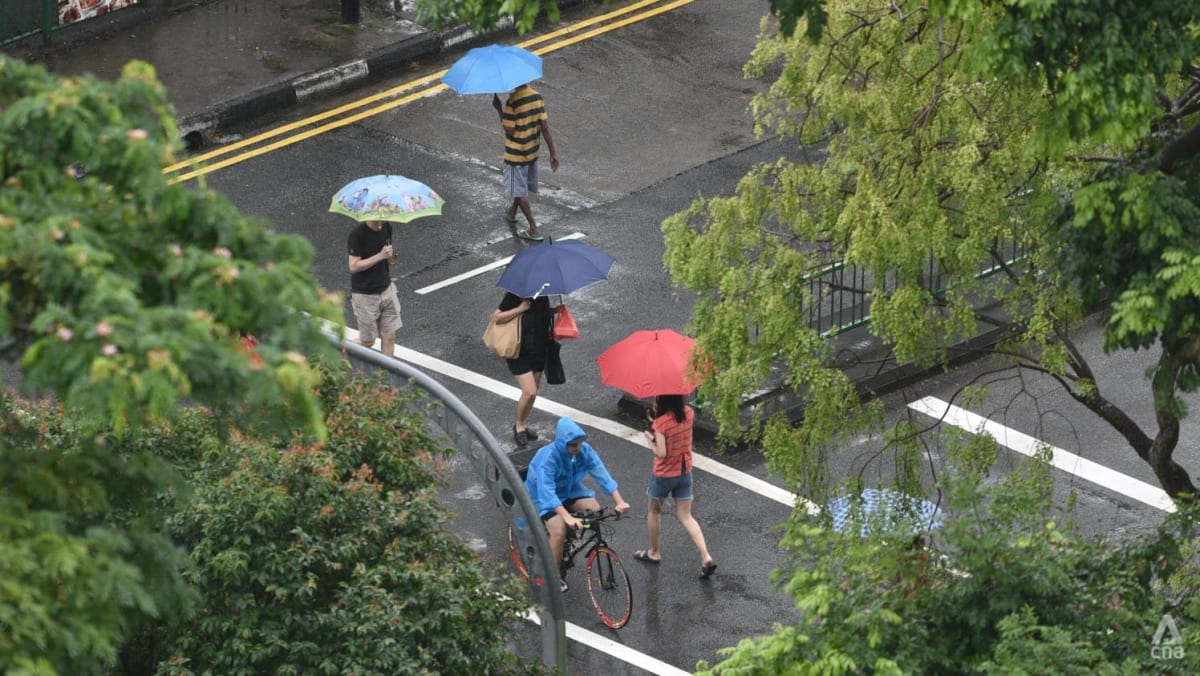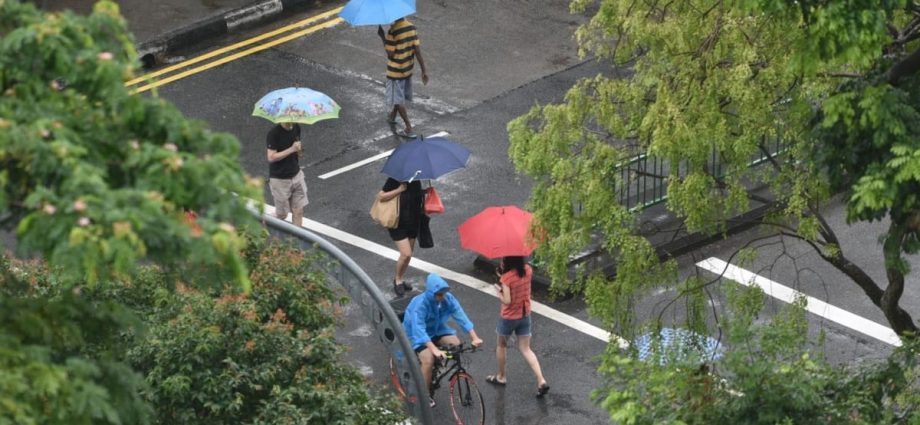
SINGAPORE: With above-average rainfall for most months, it was a very wet 2022 for Singapore, which also saw temperature levels reaching new highs in some categories.
In its annual climate assessment report issued on Thursday (Mar 23), the Meteorological Service Singapore (Met Service) said average annual rainfall for 2022 was nearly 18.8 per cent above the long-term average – defined as the 30-year period between 1991 and 2020.
This was partly influenced by prevailing La Nina conditions along with a negative Indian Ocean Dipole, which refers to a broad pattern of temperature differences in the western and eastern Indian Ocean.
2022 was ranked as the sixth wettest year in the past 40 years and the tenth warmest year since temperature records began in 1929.
SIXTH WETTEST YEAR SINCE 1980
October was the year’s wettest month, with total rainfall of 412mm – about twice the month’s long-term average.
This exceeded the previous high of 389.3mm in 2011, making October 2022 the wettest October in the last four decades.
The highest daily total rainfall for the month was 138.1mm, recorded at Pasir Panjang.
It is not common for the year’s wettest month to fall in October, with the previous occurrence in 1985, the Met Service said.
October 2022 was exceptionally wet, with a high number of Sumatra squalls affecting Singapore.
Several tropical cyclones had formed in the South China Sea and western Pacific Ocean, contributing to the formation of these squalls. The convergence of winds in the area caused by these cyclones led to the formation of Sumatra squalls, which typically bring widespread showers and gusty winds to Singapore in the early morning hours.
March 2022 was also the wettest March since 2009, it added.
The wet weather in March 2022 was mainly due to strong solar heating of land areas coupled with the convergence of winds over the island.
March was also among the wettest months of 2022, with most parts of the island receiving above-average rainfall.
Thundery showers forming over southwestern Singapore on Mar 7, 2022 led to the second wettest day in March in the last 10 years, with the highest daily total rainfall of 134.2mm recorded at Jurong West.
The above-average rainfall in both 2021 and 2022 has led to questions about whether this increase represents a long-term trend in Singapore’s climate.
Although there has been a gradual increase in the annual total rainfall of Singapore by 78mm per decade from 1980 to 2022, this trend is not considered statistically significant, the Met Service said.
Years that have predominantly experienced La Nina conditions, such as 2022, 2021, and 2011, tend to be wetter, while years with El Nino conditions, such as 1982, 1997, and 2015, tend to be drier, it added.
The Met Service also noted that 2022 marked the third year in a row where La Nina conditions were present, making this the first triple year La Nina since at least the 1960s.

